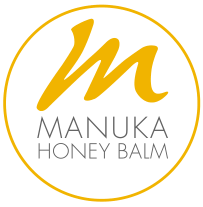Brachioradial pruritus (BRP) is a perplexing dermatological condition characterized by an intense, often unbearable itch that typically affects the outer part of the forearms. Despite its localized nature, BRP can significantly disrupt daily life and sleep, leading many sufferers to seek answers and relief.
What Causes Brachioradial Pruritus?
The exact cause of BRP remains uncertain, but it is thought to stem from a combination of neurological and environmental factors. One leading theory links the condition to nerve compression or irritation in the cervical spine (neck), often due to degenerative changes or herniated discs. This irritation may disrupt normal nerve signals, resulting in the sensation of itching without a clear external cause.
Another contributing factor is prolonged sun exposure. BRP is more commonly reported in individuals who spend significant time outdoors, suggesting that ultraviolet (UV) damage to the skin may exacerbate or trigger the condition.
Symptoms
The hallmark symptom of BRP is an intense itch, often described as burning or tingling. It usually occurs on the upper or lower arms but may extend to the shoulders or neck. Notably, the skin typically appears normal, with no visible rash, unless scratching has caused secondary damage such as redness or abrasions.
Many people with BRP report that traditional remedies for itching, such as antihistamines which offer little relief. Instead, applying cold packs often provides temporary comfort, as the cold sensation interferes with the nerve signals causing the itch.
Diagnosis and Treatment
Diagnosing BRP can be challenging, as the condition is often mistaken for eczema, contact dermatitis, or other skin disorders. A thorough medical history, physical examination, and, in some cases, imaging studies of the cervical spine may help confirm the diagnosis.
Treatment focuses on managing symptoms and addressing underlying causes. Options may include:
Topical treatments: Menthol-based lotions can desensitize nerve endings and reduce itching.
Physical therapy: Exercises to improve neck posture and spinal health can alleviate nerve compression. Having then neck vertebrae assessed by a professional for alignment.
Sun protection: Wearing sunscreen and protective clothing can prevent UV-related flare-ups.
Living with Brachioradial Pruritus
While BRP can be frustrating, many patients find relief through a combination of treatments and lifestyle adjustments. If you suspect you have BRP, consulting a dermatologist or neurologist is essential for an accurate diagnosis and tailored treatment plan. By addressing both the itch and its potential neurological roots, it's possible to improve your quality of life.

